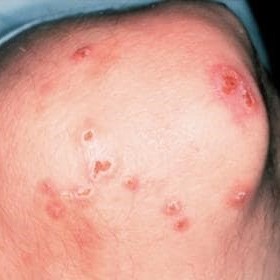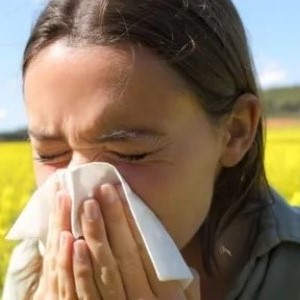00 Allergy
00 00 Bee and Wasp Sting
00 01 Churg-Strauss Syndrome
00 02 Eye Allergy
00 03 Hay Fever
00 04 Latex Allergy
00 05 Makeup Allergy
00 06 Nasal Congestion
00 10 Peanut Allergy
00 11 Poison Ivy, Oak, and Sumac

Allergies occur when your immune system reacts to a foreign substance – such as pollen, bee venom, or pet dander – or a food that doesn´t cause a reaction in most people.
Understanding the color treatment system is crucial as it can guide you in your treatment journey. Each disease or condition is assigned a unique code, which includes a treatment color. This system is designed to help you quickly identify the treatment options for your specific condition, empowering you to take control of your health.
Scroll down the site to find your disease or condition. Then, you look for the treatment color. The treatment colors are magenta (red-blue), blue, cyan (blue-green), green, yellow (red-green), and red. I give the treatment colors a number. Magenta = 0, blue = 1, cyan = 2, green = 3, yellow = 4, and red = 5. For instance, Bee and Wasp Sting would be categorized as 00-00-0. Here, the last digit, the treatment color, is magenta. The first two digits are the disease/condition group (Allergies are 00). The next two digits (Bee and Wasp Sting is 00) are the illness within the group, and the last digit (magenta is 0) is the treatment color. This system can help you quickly identify the treatment options for your specific condition.
When you use the projector, click on your treatment color, and a large image will appear. Make the color cover the whole page and project it onto yourself. When you use the LED light bulb, you choose your color manually.

Bees (Apidae) and wasps (Vespidae) are venomous, stinging insects (class Hymenoptera). A honeybee typically only attacks when it feels threatened, inflicting a single painful, toxic sting. However, the Africanized ‘killer’ bee is highly aggressive, causing massive bee attacks throughout most of the Americas, where it has become endemic. Wasps are also aggressive, sting to attack, and can sting multiple times.

Churg-Strauss syndrome is a disorder characterized by inflammation of blood vessels. This inflammation can restrict blood flow to organs and tissues, sometimes causing permanent damage. This condition is also known as eosinophilic granulomatosis with polyangiitis (EGPA). Asthma is the most common indication of Churg-Strauss syndrome.
Signs and symptoms of Churg-Strauss syndrome include fatigue, fever, weight loss, inflammation of the nasal passages, cough, shortness of breath, and chest pain.

Eye allergies are allergic reactions that affect the eyes. Allergic eye symptoms are common and impact around 10% of the population.
Signs and symptoms of allergic reactions involving the eyes can include red (bloodshot) eyes, irritated eyes, itchy eyes, tearing or runny eyes, swollen eyelids, soreness, burning eyes, eye pain, or sensitivity to light.

Hay fever is a term used to describe a seasonal allergic reaction to airborne particles such as pollen. The medical term for hay fever is allergic rhinitis. This common condition affects up to 30% of the population. Signs and symptoms of hay fever include a runny nose with clear mucus, nasal congestion, itchy eyes, watery eyes, and sneezing.

A latex allergy is an allergic reaction to products containing latex derived from the fluid extracted from a rubber tree. It has been utilized in various household and medical products. Signs and symptoms of a latex allergy include an itchy, red rash at the contact site that resembles a poison ivy rash. A more severe type of reaction to latex is the anaphylactic reaction, which can affect the skin, respiratory, gastrointestinal, and circulatory systems.

A makeup allergy is an allergic reaction to any component in cosmetic products. Cosmetics are substances applied to the surface of the skin, hair, or nails. They often contain a complex mixture of perfumes, emulsifiers, sunscreens, pigments, metals, resins, preservatives, and various inert materials and botanical products. The face is most commonly involved in makeup allergies. Symptoms and signs of a makeup allergy include a rash often appearing as a scaling, flaking, dry, swollen red area that may itch.

Nasal congestion, or “stuffy nose,” refers to an obstruction of airflow in and out of the nose. It most commonly results from inflammation and swelling of the lining tissues in the nasal passages and sinuses. Less commonly, anatomical obstructions, such as a deviated nasal septum or foreign bodies, may lead to nasal congestion. Rarely, tumors in the nasal passages or chronic medical conditions may cause nasal congestion.

Peanut allergy refers to an allergic reaction to peanuts or products containing peanuts. It is a relatively common type of food allergy in developed countries, and most of those affected are children under the age of three. Peanut allergy is most likely to occur in individuals with other allergies or a family history of allergies. About 90% of reactions to peanuts occur within 20 minutes of exposure. Signs and symptoms can include skin redness, hives, and itching.

Sensitivity to poison ivy, oak, or sumac is common. Many people experience a characteristic rash reaction upon contact with the resin from these plants. The medical term for this condition is allergic contact dermatitis.
Signs and symptoms of a rash from poison ivy, oak, or sumac include a mild, red, bumpy skin rash that typically resolves within 5 to 12 days. Other associated symptoms may include intense itching, blistering, and swelling. The rash usually appears on areas of skin that have come into contact with the plants, but it can sometimes develop in other areas.